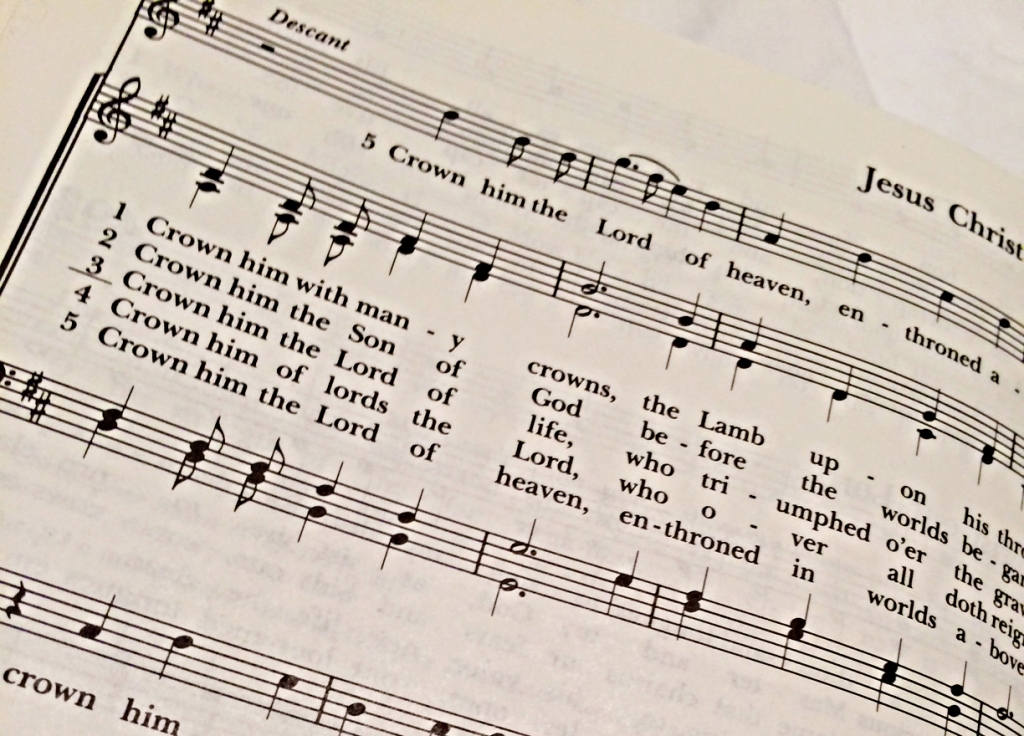
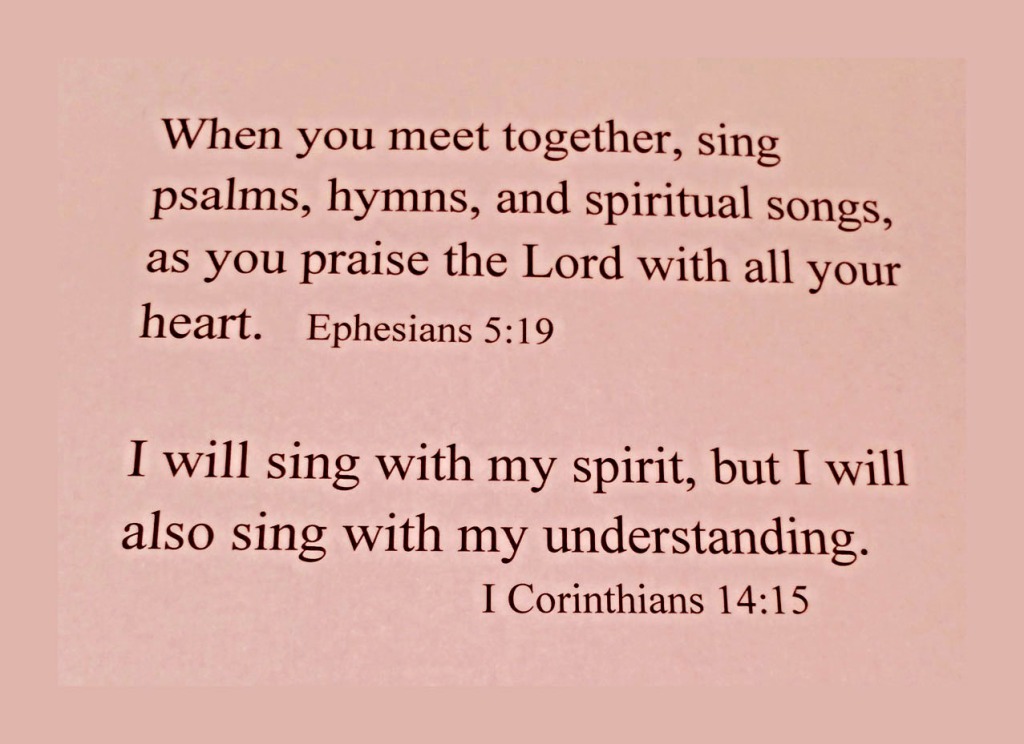

Tradition is a good thing. It is traditionalism that is bad. Tradition is the living faith of the dead; traditionalism is the dead faith of the living. Tradition lives in conversation with the past, while remembering where we are and when we are and that it is we who have to decide. —Jaroslav Pelikan
We are created to sing because it leads us joyfully to the great Singer and Creator of the heavens and the earth. Don’t ever allow yourself to think that we invented music and singing. We were designed and created to sing by God. Paul Tripp writes, “God is the ultimate musician. His music transforms your life. The notes of redemption can rearrange your heart and restore your life. His songs of forgiveness, grace, reconciliation, truth, hope, sovereignty, and love give you back your humanity and restore your identity in Him. Our singing should sound like Him, look like Him, and lead our hearts to Him.”
When the Psalmist sings, “I lift up my eyes to the hills, (asking) where does my help come from?”, his help does not come from those hills, but from He who made the hills. We do not worship the created art of singing, we worship Him who created the art. So don’t sing primarily because you love singing, or keep quiet because you do not. Sing because you love who made you, and formed you, and enables you to sing. – From SING! by Keith and Kristyn Getty
The Circle of Music
At the genesis of the process, a composer ideally hears a sound in his or her head or heart and to the best of their ability notates that sound on the printed page through the use of artistic drawings, drawings that are used to indicate pitch, rhythm, expression, and at times text. In the second stage of the circle, a conductor, song leader, or musical performer/s takes the composer’s musical drawings and uses them to create an interpretation of the composer’s original musical ideas. If the performer spends enough time with the printed music, it will eventually and ideally become simply an aid to remembered sound. In the third stage, the audience receives the interpretation of the composer’s original ideas and sends back to the conductor or performer/s a sense of their reception of the music through the spirit in the room, through vocal feedback during or following the performance, and/or through their level of applause or cheering. If the composer is present, or can see or hear a recording of the performance, the musical experience completes its full circle back to its creator or to its conductor or performers. This is the circle of music. Of note, it is important to the process that a composition doesn’t get stuck somewhere in one phase of the circle for the eventual success of the composition. – Mark K. Williams, Christ Church Anglican (1733), Savannah, GA
Note: See RECOMMENDED LINKS and HIGHLY RECOMMENDED BOOKS at the bottom of this web page. Also see “Seven Biblical Reasons Why Singing Matters” on the Priest & Church Musician Relationship Page.
WHAT’S NEW?
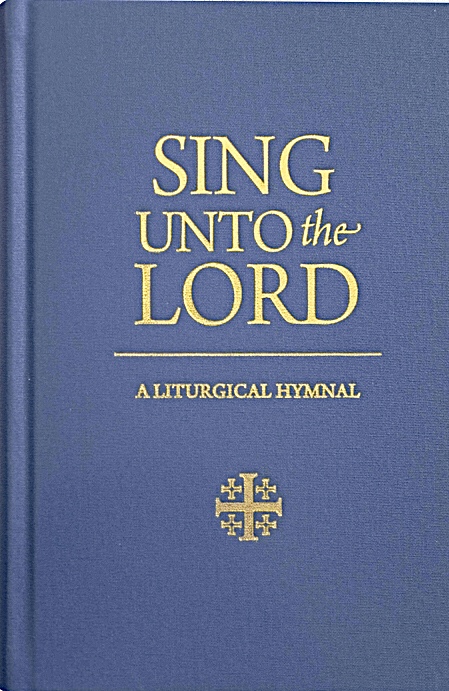
Sing unto the Lord: This is the new hymnal from Anglican Music Publishing. At the heart of Sing Unto the Lord are 740 hymns representing the best selections from The Hymnal 1940, The Hymnal 1982, and Hymns Ancient and Modern as well as many rich new hymns written in the past 40 years. Included are only the best texts and tunes, hymns that are highly singable and time-tested. The extensive Service Music section is based on the structure of the 2019 Book of Common Prayer. The hard bound Pew Edition and large-format spiral bound Keyboard/Guitar edition as well as a free Hymnal Planner under the Resources tab are available at (Sing Unto the Lord: A liturgical hymnal).
HYMNS and CONTEMPORARY MUSIC PLANNING: A fine resource for planning and selecting hymns for worship is the free Hymnal Planner for the new Anglican hymnal Sing Unto the Lord. The planner is found under the Resources section of the website (Sing Unto the Lord: A liturgical hymnal). Another remains The Episcopal Musician’s Handbook (livingchurch.org) which is published annually for each new Church Year (cycles A, B, and C). The publication correlates precisely with the use of The Hymnal 1982. Also included here is a growing list of effective (tried and true) contemporary songs for congregational singing sorted by church season (see link below).
HIGHLY RECOMMENDED ARTICLES & VIDEOS:
The HOW of Authentic Hymn Singing from SING! Conference (start video at 11:35) – see link to session handout below
An excerpt from the Music Ministry Philosophy main page, “An interview with the former ACNA Music Task Force Chair: Mark K. Williams”.
What about music styles and effective choice and leadership of music for the congregation’s worship?
I have come to a place that the style of a piece of music is not so important. Musical expression of God’s love and grace through the Gospel is certainly larger than any singular style of song. To me then, what is important is that the choice of music have these quality traits: that it is singable by the congregation and was composed with this in mind (it is not a soloistic piece of music). That the melody of the song is well-crafted and, that there is a good marriage between the melody and the text. That the music, as much as possible, is in a key that the congregation can sing (no notes below the A below middle C and no notes above high D or E). That the music carries some level of high intrinsic value; that it has stood the test of time, however long. And that the choice of music fits the liturgical year or the theme for the day for worship. The primary goal here is that quality and appropriate music is chosen for the work of the people; music that the congregation can successfully participate in singing. Not that the congregation watches the leadership sing.
Also, I repeat new songs (hymns, spiritual songs, and Service Music) often to allow the congregation to become familiar enough with the music that they can eventually move from learning it to worshipping through it. If it’s a new hymn or praise song, we sing it three Sundays in a row so that the congregation can grow into it. We also know after three weeks whether a new song has taken or not. And most important, I strive very hard to have the leading of the song (whether through the choir’s leadership and/or the leadership of the song through a keyboard, or through the instruments or our Folk Group/Praise Team) to be in as authentic a manner as possible. And finally in all this, I work diligently to find a tempo that allows the music to dance and to be successful within the room acoustic it is being offered. “Singing tempos” in acoustically dry rooms will need to be different than in acoustically live ones.
So what do I mean by the phrase, “revealing the song in as authentic a manner as possible?” What I mean here is that if it is a chant then chant it, based on the rhythm of speech. If it is an Appalachian folk song, let it dance as one. If it is a spiritual, unlock the appropriate musical tempo and style of a spiritual and let it be that. Ask yourself, “who wrote this song and how would the people who wrote have sung it?” You can find much about how to properly “clothe” a song, an authentic expression of the song, through the asking of these key questions and through taking the time to explore the fine print at the top and bottom of the printed page of music. When was this music composed, what country does it come from, what is the meter of the song, and what is the origin of the text before you are all key questions in this journey?
This, my friends, can become a most gratifying trek. And when the journey is taken, you will discover that the notes on the page are waiting there to be unlocked. That when the right tempo and dance of the song are found and expressed, when the song is “properly clothed”, those words will actually begin to fly off the page and our work of worship through song will be the richer for it.
And finally, as the song leader, I would challenge you to dare to listen deep, to listen to the core, the “inner mantle” of the sound that is being made. And then from this to encourage and to lovingly coax the singers and instrumentalists toward a more authentic expression of that sound using modeling and analogy as highly effective tools in your tool box. I have come to develop a great love for the congregation’s singing, for truly they are a part of the great choir that joins with the eternal praise of those gathered around the throne of God.
RECOMMENDED LINKS:
The Hymn Society A terrific resource for all kinds of congregational singing.
https://hymnary.org/hymnal/EH1982/ Hymnary.org includes information on the contents of many current hymnals as well as helpful information on many hymns including histories and texts.
https://wordwisehymns.com/this-blog/ Wordwise Hymns is a site dedicated to hymns – their history and their meaning.
https://us.ccli.com/ CCLI provides information and resources for churches and copyright owners around the world, relating to copyrights of Christian worship songs
https://songselect.ccli.com/ SongSelect, a division of CCLI, is the fine source for worship song resources. Users can easily download transposable chord charts, melodic lead sheets, vocal harmony sheets, and lyrics-only sheets for over 100,000 Christian songs.
https://www.sheetmusicdirect.com/ From this website you can download thousand of songs in several formats as well as transpose songs in different keys.
https://store.gettymusic.com/us/songs/ The official website of modern hymn-writers Keith & Kristyn Getty (known for “In Christ Alone”) with music resources, articles, videos, and more.
HIGHLY RECOMMENDED BOOKS:
SING!—Keith and Kristyn Getty (available on Amazon)
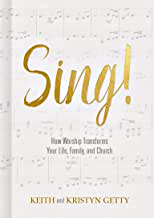
We can not more highly recommend a book on the history and nature of Christian singing to priests, music directors, choir members, and congregants than Sing! This powerful and deeply insightful book has grown out of Keith and Kristyn Getty’s passion for congregational singing. It has been formed by their traveling and playing and listening and discussing and learning and teaching all over the world. In writing it, the Getty’s have five key aims:
• to discover why we sing and the overwhelming joy and holy privilege that comes with singing
• to consider how singing impacts our hearts and minds and all of our lives
• to cultivate a culture of family singing in our daily home life
• to equip our churches for wholeheartedly singing to the Lord and one another as an expression of unity
• to inspire us to see congregational singing as a radical witness to the world
Also included are discussion questions at the end of each chapter for the use of small groups and choirs.
Melodious Accord—Alice Parker (available on Amazon)
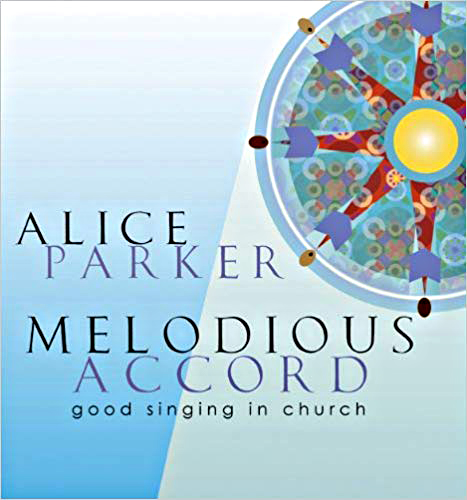
Singing is what liturgy sounds like and singing is what all of us can delight to do. Alice Parker has brought song to congregations that never knew they had it. As composer and arranger (her work with the Robert Shaw Chorale is known around the world), as conductor and as teacher, she is song’s champion to all of us who thought we had left the singing to the professionals. This book is the best effort to capture in print what she has to teach us about taking song from the page and the stage and amplifiers and putting it right where it belongs, on each and every tongue.
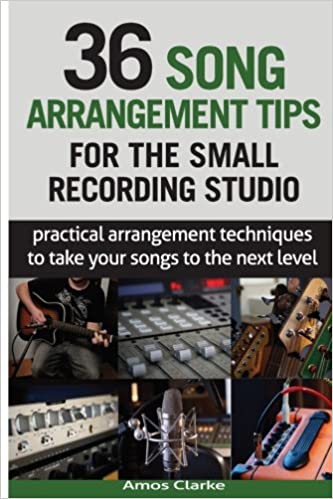
Best book on composing and arranging songs: 36 Song Arrangement Tips for the Small Recording Studio: Practical Arrangement Tips to Take Your Songs to the Next Level – Amos P. Clarke (available on Amazon)
Finally, a user-friendly and well-written book on successfully composing and arranging song. Although the title communicates a focus on studio artists and producers, the book is entirely applicable to composers and arrangers of sacred song, both experienced and inexperienced. In my experience, far too many worship songs have been written without the proven fundamentals of good composition in play. Without the use of these time-proven essentials, many composed songs and arrangements wind up with complicated rhythms, are solo artist rather than congregation focused, and have melodies which wander or fall flat as they are not memorable melodies that take the singers, the worshippers, on a journey. That is a journey with God as the audience and a melody that illustrates and reveals the text with craftsmanship and profound simplicity for the worshippers. As you will see, worship songs with staying power, the ones with lasting intrinsic value, are the ones that employ many of the excellent essential principles communicated in Amos Clarke’s book.
36 Song Arrangement Tips for the Small Recording Studio: Practical Arrangement Tips to Take Your Songs to the Next Level is a must for any musician who wants to successfully compose a new or arrange an already composed song for a congregation, a worship band, or a church folk group. No doubt, inspiration from the Holy Spirit has undergirded many a successful sacred composition. At the same time, the Lord exhorts us to “play skillfully” and to “sing with the heart and with the mind also”. This book will significantly aid church musicians toward these ends.
Written in highly compact but powerful and easily accessible chapters of 2-3 pages in length, the book is filled with indispensable approaches to successful composition and arranging. We cannot more highly recommend Mr. Clarke’s book. If this topic is a need, a desire, and you want to improve your own ministry, get this book! You will not regret your purchase.

Sing unto the Lord: This is the new hymnal from Anglican Music Publishing. At the heart of Sing Unto the Lord are 740 hymns representing the best selections from The Hymnal 1940, The Hymnal 1982, and Hymns Ancient and Modern as well as many rich new hymns written in the past 40 years. Included are only the best texts and tunes, hymns that are highly singable and time-tested. The extensive Service Music section is based on the structure of the 2019 Book of Common Prayer. The hard bound Pew Edition and large-format spiral bound Keyboard/Guitar edition are available at (Sing Unto the Lord: A liturgical hymnal).

Magnify the Lord: This is The Reformed Episcopal Church’s hymnal based on The Hymnal 1940 and its Service Music. It also includes new hymns in use since the publication of The Hymnal 1940. Basic Singer’s Edition by Anglican House Publishers (Magnify the Lord – Anglican House Publishers).
Magnify the Lord: Accompaniment Edition (2 Volumes) available from Anglican House Publishers (Magnify the Lord – Anglican House Publishers).

The Hymnal 1940: of the Protestant Episcopal Church in the United States of America with Supplemental Liturgical Index and Collection of Service Music, Hardcover: 1961 Newest version of the Hymnal 1940. Used by many Reformed Episcopal Churches. (available on Amazon)